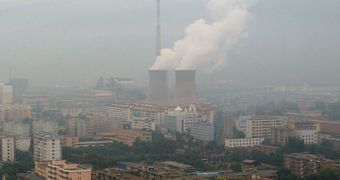Carbon dioxide (CO2) is a gas that we release into the atmosphere when we exhale. It is also the greenhouse gas responsible for up to 26% of the greenhouse effect on Earth. Some of it occurs naturally in the atmosphere, while most of it results from human activities such as burning of fossil fuel and coal.
Since we can't stop breathing, it's clear that we must do something to reduce the amount of CO2 released into the atmosphere. As the oil industry is not likely to stop polluting anytime soon, a group of researchers thought about removing the gas from the atmosphere even after it was produced and released.
A technology research and development company called Global Research Technologies, LLC (GRT) and Klaus Lackner from Columbia University have achieved the successful demonstration of a bold new technology to capture carbon from the air.
The development of the device began in 2004 and has recently been put to the test in an amazing experiment.
The device itself is an air extraction one, in which sorbents (absorbing compounds that capture CO2 from the air that is pulled in by the device) capture carbon dioxide molecules from free-flowing air and release those molecules as a pure stream of carbon dioxide for sequestration and has met a wide range of performance standards in the GRT research facility.
"This is an exciting step toward making carbon capture and sequestration a viable technology," said Lackner. "I have long believed science and industry have the technological capability to design systems that will capture greenhouse gases and allow us to transition to energies of the future over the long term."
The preliminary results are promising, and the researchers are more than happy to present this new development to the world.
"We are trapping carbon dioxide about 1,000 times faster than a tree does," said Lackner. "Once you have the CO2 attached to the sorbent, you have to pry it loose again, which is the costly part of the procedure."
One of the most important advantages of the device is the fact that these applications could be placed wherever sequestered carbon dioxide would be stored, instead of where emissions occur. By contrast, scrubbers are impractical to use on cars, which contribute 20 percent of the global carbon dioxide emissions and it is difficult to retrofit power plants with the scrubbers.
Imagine an array of such devices, placed in a huge industrialized area like Tokyo, New York, London or Mexico City, that could to the job of large forest that would never fit, or survive, in today's increasingly polluted and pollutant cities.

 14 DAY TRIAL //
14 DAY TRIAL //